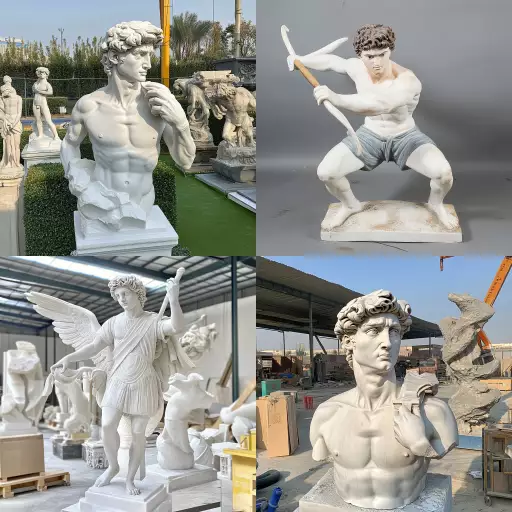Explore the Best AI Image Gallery

AI-Generated Media: A Canvas of Promise and Peril
The realm of creativity is undergoing a seismic shift with the advent of artificial intelligence (AI)-generated media. From mesmerizingly realistic images to evocative musical compositions, AI algorithms are pushing the boundaries of whats possible, blurring the lines between human and machine artistry. This transformative technology holds immense promise for the creative industry, offering exciting new possibilities for expression, collaboration, and innovation. However, alongside its potential benefits lie complex ethical considerations that demand careful scrutiny.
The Creative Revolution: Applications Across Industries
AI-generated media is already making waves across diverse sectors:
- Visual Arts: AI algorithms can generate stunning visuals, from photorealistic landscapes to abstract art pieces. Tools like DALL-E 2 and Midjourney allow users to create unique images based on text prompts, democratizing access to artistic creation.
- Music Composition: AI is composing original music in various genres, from classical symphonies to catchy pop tunes. Platforms like Amper Music and Jukebox leverage machine learning to generate music tailored to specific moods or requirements.
- Film and Animation: AI can assist in animation workflows by generating character movements, creating background environments, and even writing dialogue. This technology can accelerate production processes and unlock new creative avenues for filmmakers.
- Advertising and Marketing: AI-generated content is used to create personalized ads, generate marketing copy, and develop engaging social media campaigns. This allows businesses to tailor their messaging to specific audiences more effectively.
Navigating the Ethical Labyrinth
The rise of AI-generated media raises crucial ethical considerations:
- Copyright and Ownership: When an AI generates content, who owns the copyright? Determining ownership in a world where machines create can be complex and legally challenging.
- Bias and Fairness: AI algorithms are trained on massive datasets, which can contain biases that reflect societal prejudices. This can result in AI-generated content perpetuating harmful stereotypes or discrimination.
- Transparency and Accountability: The decision-making processes of complex AI models can be opaque, making it difficult to understand how they arrive at certain outputs. Ensuring transparency and accountability is essential for building trust in AI-generated media.
- Job Displacement: AIs ability to automate creative tasks may lead to job losses in certain sectors. Its important to consider the societal impact of these changes and explore ways to mitigate potential negative consequences.
Shaping a Responsible Future
As AI-generated media continues to evolve, its crucial to establish ethical guidelines and regulations that promote responsible development and use. This includes:
- Promoting Transparency: Making the workings of AI models more understandable to humans is essential for building trust and accountability.
- Addressing Bias: Actively working to identify and mitigate biases in training data can help ensure that AI-generated content is fair and equitable. \n
- Encouraging Collaboration: Fostering collaboration between artists, technologists, ethicists, and policymakers is crucial for navigating the complex challenges of AI in creative fields.
- Education and Awareness: Raising public awareness about the potential benefits and risks of AI-generated media can empower individuals to make informed decisions about its use.
AI-generated media presents both unprecedented opportunities and profound challenges. By embracing a collaborative and ethical approach, we can harness the transformative power of this technology while safeguarding the integrity and value of human creativity.
](https://images.ai-img.art/thumbnails/150/f9584153b4cddd8c9fab611dc10247549b275c59bc173251e37d0935874f9deb.webp)

















](https://images.ai-img.art/thumbnails/150/4289d1230b86a96c4d556636c3167bed0ef38f850826549517e4e45db4d87bf7.webp)
](https://images.ai-img.art/thumbnails/150/bddf3ae4a232290858389b933c866ad3be429ef2e25c23a9f4d7713ed6e44d0b.webp)






](https://images.ai-img.art/thumbnails/150/c2c9c48b38fae37f0a457b80b084ed01ba803810fc8f488c8f610c03abc74049.webp)


](https://images.ai-img.art/thumbnails/150/f67d9af3398150f2ab1bcf250717fea134275e2ca896252b54a4d9bb3719f9ac.webp)








](https://images.ai-img.art/thumbnails/150/008b5d5d49667cc2e93a5f8a8adfaa545963da99c39ff0901f5296294636400d.webp)


